An unmanned police helicopter has taken to the sky for the first time under a ‘cutting-edge’ taxpayer-funded scheme.
The National Police Air Service (NPAS) is hoping the remotely-piloted aircraft will be able to join its helicopter fleet in the future to carry out searches for criminals and missing people.
Adding to its ‘eyes in the skies’, it is capable of flying at a maximum height of 18,000ft, soaring through the air at 115mph and is able to stay airborne for up to six hours.
Police say is it ‘not possible’ to say how much one uncrewed aircraft costs, but the scheme is being funded by all police forces in England and Wales and the Home Office.
Critics have suggested an unmanned police helicopter is simply a drone, while others pointed out that it needs a remote pilot anyway.
But the NPAS has clarified that the unmanned helicopter, a Schiebel Camcopter S-100, is larger than existing drones used by police forces and has a greater range.
‘The type of aircraft we will be trialling is much larger, with the ability to carry similar mission equipment to a current police helicopter,’ they said. ‘It will be able to fly beyond the sight of the controller.’
Night-time test flights are being conducted over the Bristol Channel and police believe the helicopters could be capable of staying in the air for up to 12 hours in the future – up from its current capability of six hours.
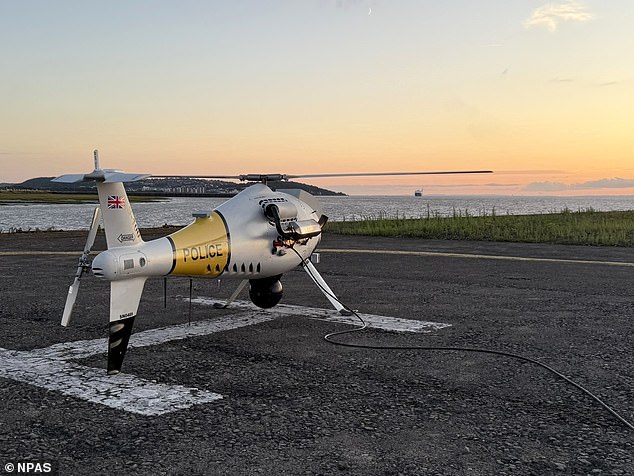
An unmanned police helicopter (pictured) has taken to the sky for the first time under a taxpayer-funded scheme
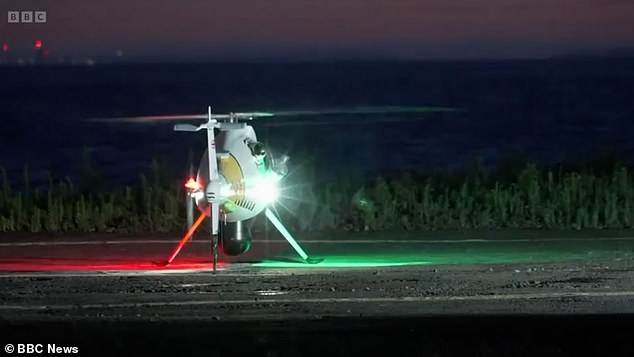
Night-time test flights are being conducted over the Bristol Channel
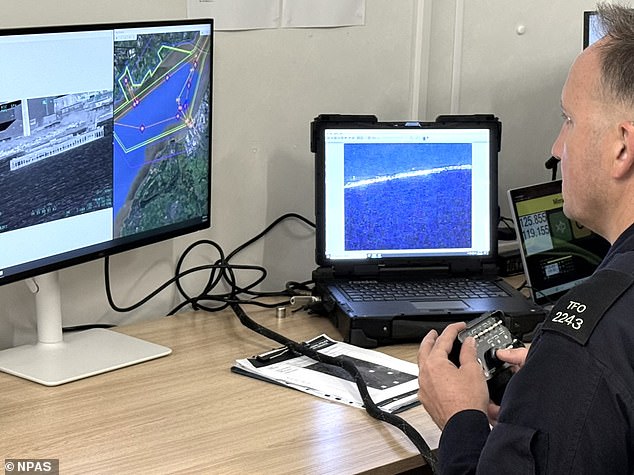
The National Police Air Service (NPAS) is hoping the remotely-piloted aircraft will be able to join its helicopter fleet in the future to carry out searches for criminals and missing people. Pictured: Pilot remotely controlling the aircraft
David Walters, NPAS head of futures and innovation, said: ‘As technology advances, so too do the opportunities for police air support. This trial will test uncrewed aircraft capable of flying for up to six hours, equipped with mission systems comparable to those on our current fleet.
‘If successful, this could pave the way for a highly capable and sustainable blended fleet of helicopters, aeroplanes and uncrewed aircraft.
‘Our goal is to ensure the right tool is available at the right time, in the right place, to support policing across England and Wales.
‘This represents an ambitious step toward a modern, innovative and best-value police aviation service, designed to meet the diverse needs of policing and communities.’
Mr Walters said 30 per cent of NPAS calls were to search for missing people, which the unmanned aircraft could be vital for.
It has a forward-facing camera for the pilot to monitor remotely from a base, while it uses a radar to detect other aircraft.
The Schiebel Camcopter S-100 carries uses the same high-powered infrared camera as normal police helicopters.
Mr Walters added that the unmanned helicopter offers a 90 per cent reduction in emissions per hour than crewed aircraft.
PC Matt Leeding, an NPAS tactical flight officer told BBC News: ‘My job doesn’t change, all we’re doing is embracing the new technology, the same service, using the same equipment just on a slightly different platform,’ he said.
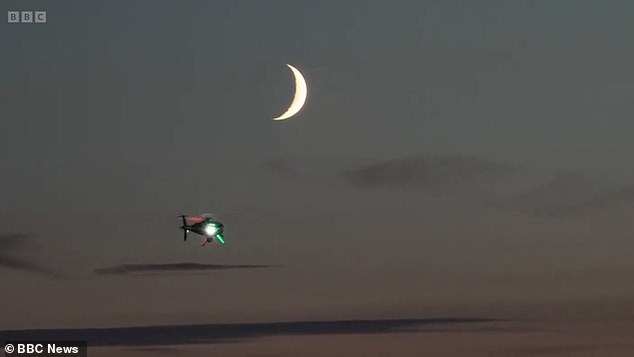
Footage shows the unmanned police helicopter on a test flight as police look to add it to the fleet
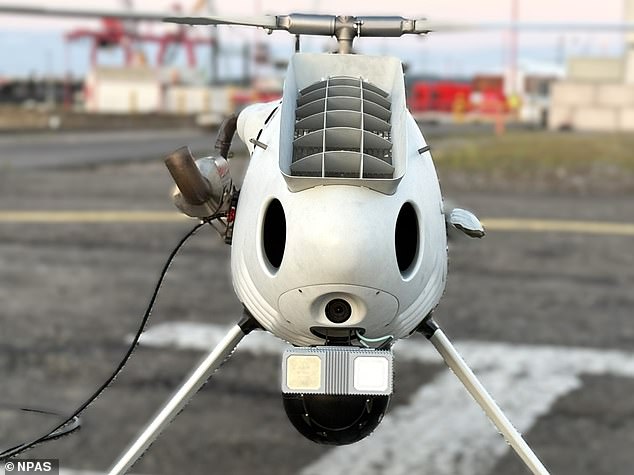
It has a forward-facing camera for the pilot to monitor remotely from a base, while it uses a radar to detect other aircraft
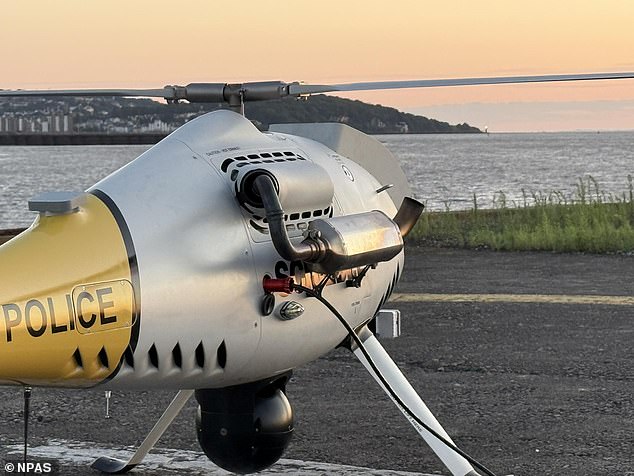
The Schiebel Camcopter S-100 carries uses the same high-powered infrared camera as normal police helicopters
‘There are still incidents when I’ll be sitting in an aircraft at 1,500 feet (457 metres) for certain specialist operations and tasks that require a crew on the scene.’
Some critics fear that it could lead to the end of manned aicraft.
One wrote on X: ‘Nothing beats the power of the human eye in the sky. While there is undoubtedly a place for this technology, I hope that this isn’t the beginning of the end of manned aircraft for and other crews across the UK.’
Another, mocking the ‘thought police’, joked: ‘Can your uncrewed aircraft read illegal thoughts?’
Others simply said: ‘Isn’t that called a drone?’ and ‘What is the big difference between unmanned helicopter and drone?’
And a fourth wrote: ‘How much did that cost taxpayers ?’
Test flights are due to take place until October but it is expected years of testing would be needed before the unmanned aircraft joins the full NPAS fleet.
Sophie O’Sullivan, director of Future of Flight at the UK Civil Aviation Authority, said: ‘We’re committed to enabling the emergency services across the UK to harness cutting-edge aviation technology to do their jobs more efficiently and effectively.
‘Through our support for innovative projects like the trial with NPAS, we are helping future-proof critical operations and ensuring that emergency services can safely benefit from the opportunities presented by drones and advanced air mobility.
‘The data gathered from these trials will play a vital role in shaping future policies and accelerating the safe and effective integration of new technologies across the emergency services sector.’












